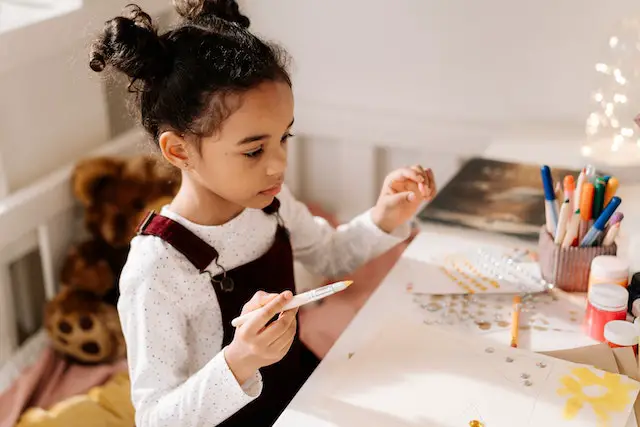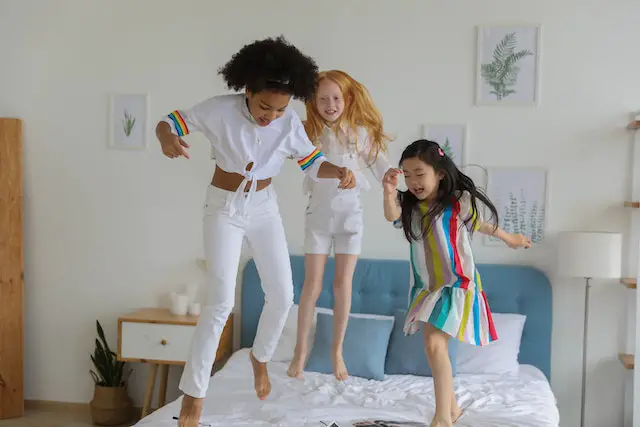
Furniture Ideas For Kid's Bedrooms
Choosing furniture for the kids' room is not an easy task at all. Below the cover of glimmering playful pieces that even adults fall in love with, designing a space for children is a bunch of difficult decisions. It's not only about buying something that looks nice and cute.
You can come across kids' furniture pieces that seem like they have just jumped off a fairytale while, in reality, they are not practical and worth nothing. That's why the questions of functionality, comfort, and quality are some of the crucial points every parent should consider when buying furniture for the kids' room. This article will give you an excellent guide to making intelligent decisions.

Make a Plan and A List of The Things You'll Need
Furniture for the kids' rooms can be too sweet. So, if you don't want to lose all day going from one store to another admiring the cute beds or scrolling a kids' furniture website, it would be better to make a plan.
Whether you are renovating an old kids' room or your kids are about to move into a new one, you should consider the kind of space you would like to create. If it's a question of renovation, before buying new furniture, see if there are some exciting things from the old room that you would like to keep. Then, use the right tools, disassemble the rest of the furniture, and take it out of the room. Only then can you have a clear picture of what you need. And, one more thing. It is essential to do all the measuring beforehand. You don't want to buy a nice costly closet and figure out it simply cannot fit in the room after it arrives.
Kids just need their own space.

Defining the Budget when Buying Furniture for The Kids' Room
The planning step is significant since it includes the point of defining your budget. Furnishing elements can sometimes be pretty expensive. So, it would be better to clearly understand how much money you are likely to invest in the kids' room before buying something. However, remember that even if your budget is limited, you can fix it with some creativity.
Their Safety Should Be Your Top Priority
The whole room is your kid’s playground, and you should remember that. They may want an indoor climbing tree, a hanging chair, or a small tent. However, they can have all of that only if you consider it safe and suitable for their age. When it comes to safety in their room, furniture plays a huge part there.
- Sharp edges are not allowed. Choose the shape of furniture that looks safe since kids are in constant motion, and they often fall.
- Avoid furniture with slippery surfaces.
- Do not buy anything you know is made of toxic substances according to safety standards. Don't be shy to ask sellers for the quality certificate as well.
- Breakable and fragile items have no place in the kids' room.
- If, by some chance, the furniture you choose has some visible wires, insulate them, and fix everything that seems suspicious.
The Size Is Essential
When it comes to the size of the furniture, the age of your kids plays a crucial role here and is one of the things to consider when buying furniture for the kids' room. If they are still small, try to choose something suitable for them. The beds should not be too high, so your kid can climb up quickly and safely. Then, they should adjust to their height when it comes to closets. Your kids will feel more comfortable if they can reach their clothes and dress up all by themselves.
If you decide to purchase furniture online, ask for several real-life pictures of a person standing next to a bed or a shelf you want to buy. That will help you get the actual size of the objects.
Let them reach their toys easily.

Choose Wisely and Buy Multifunctional Furniture
Your kids will need a space to play. That's why massive, bulky furniture is not a practical solution. What's more, cluttering the room with too much furniture is not good either. The best advice we can give you at this point is to keep the kids' furniture minimal. Every piece of furniture should have its purpose in the room. It is imperative to be functional and buy only those elements that kids need.
On the other hand, to leave them enough space to run, jump, and play, you can also turn to multifunctional furniture. So, for example, by buying a bunk bed and desk combination, kids will get a two-in-one furniture solution.
Finally, there comes the question of your kids outgrowing things very quickly. Thanks to modern design, buying multifunctional cribs that can transform into beds once your baby grows up and adjustable chairs and desks are now possible.
Go for Solid and High-Quality Furniture
Good looks and discounts you may get should not be the only thing you consider when buying furniture for the kids' room. The crucial things are quality and durability. You need to choose furniture made of high-quality materials, the ones that you know will last for a long time. What's more, this again concerns the point of safety. Furniture that is not solid and sturdy enough can cause a lot of trouble, and your kids can hurt. You don't need a table that will break the first time your child climbs on it, and they will climb, that's for sure. Choose furniture that can support children's weight and games.
Don't Forget the Storage Space
Kids stuff their rooms with toys, games, coloring books, and drawings. Sometimes there are too many of them, and when they are scattered all around, that's a real mess. That's why a storage place for all of them is more than necessary.
Get a shelf or a chest of drawers. Find an exciting toy box that your child will love, and that can be useful and decorative. Then, ask your child to help you sort things together. It will undoubtedly solve the ‘chaos' problem and help your kid learn to stay organized.
And, when it comes to storing clothes, a wardrobe with drawers or a box bed can save your day. It is as simple as it can be: the more space, the less clutter.
Be Practical when Choosing Materials
Children like water, markers, crayons, watercolors, plasticine, and all the other interesting things that can harm your furniture. That is why you should be practical and play smart in choosing furniture material. Buy something durable that you can clean easily. Avoid upholstered chairs or toy boxes. Try wooden or metal ones instead.
And, if you want to save the rest of the room, buy a lovely drawing table with the motives from their favorite cartoon. Create a nice place they would gladly choose when they want to play artists, and save your bed and carpets from a monthly deep cleaning.
Children like to draw. Motivate them, and encourage their creativity.
Leave Them with Enough Free Space
Children would be grateful if they had a lot of free space. So, try to adjust the furnishing with the size of their room.
A modular bed you can fold when you don't use it is a perfect choice for small rooms and will save a lot of space. Big rooms, on the other hand, proved to be even more tricky. Since there is a lot of design space, parents sometimes fall into over-furnishing. Please don't do that. Leave them with enough free space to play.

Consider Involving Your Children in The Buying Process
It won't hurt to ask children what kind of room and furniture they would like. You are about to create a small world for them, so let them be involved in the process. Indeed, kids sometimes can have some crazy and irrational ideas, and you certainly should not follow all their wishes. But, if your baby boy is interested in sports, consider buying him sport-themed furniture for his new room. That way, you will make him love the space even more and have a fun time there.
Conclusion
Now that you know the essential things to consider when buying furniture for the kids' room, it's time to start. The task is not easy, and there are many things to consider. But don't take it too seriously. Bring your family members with you, and let them help with finding all the things you want. Enjoy playing designers, and find a way to have some fun.
Bio
Sarah Jones is a journalist working in New York. She loves writing columns and blog posts about fashion, house remodeling, and wedding decorations. In her free time, Sarah gathers ideas from the internet and magazines and creates exciting designs.
